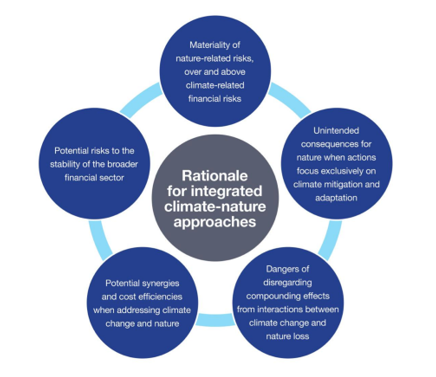Green avenues serve as viable prospects for Islamic financing

Shariah-compliant lending can help narrow the investment gap necessary to achieve the UN SDGs by 2030
The gathering of global leaders, policymakers and business entities at Cop27 in Sharm al-Shaikh saw the spotlight shine firmly on climate finance. Channeling investments to fight climate change and other issues facing humanity were stated by many to the number one priority, with the ‘loss and damage’ fund seen as a watershed moment for climate-risk nations.
It is estimated that the world is facing an annual investment gap of $2.5tn when it comes to achieving the UN Sustainable Development Goals (SDGs) by 2030. The pandemic is said to have further widened this gap to $4.3tn, as per UNCTAD estimates, with the ongoing Ukraine-Russia conflict set to exacerbate the issue.
For preserving and restoring biodiverse ecosystems alone, the required investment is estimated to be between $300bn-$400bn. However, only $52bn is currently being directed into these projects.
“We shall never be able to fill the funding gap with the money contributed by just governments and philanthropy,” said Adnan Aziz, director of the Centre for Excellence in Islamic Finance at Ajman University (AU-CEIF). “Private sector could close more than half of this funding gap by setting up profitable enterprises with a positive impact.”
Aziz’s comments came during the MEED-Mashreq Islamic Business Leaders Forum on 7 December, during which experts strongly advocated the role of Islamic finance in improving the bankability of nature-based solutions and the wider UN SDGs.
As one of the fastest growing global financial segments, the Islamic finance market is well-placed to help narrow the investment gap. An annual report by S&P Ratings valued the global Islamic finance market at $2.2tn in 2021; experts at the forum estimate this figure to have surpassed $3tn at the end of 2022.
Sharia-compliant financing principles, encompassing the wellbeing of the society and environment, naturally align with the guidelines of ethical investing – more commonly known as environmental, social and governance (ESG) investing.
Given the substantial level of funding required to realise these goals, Islamic finance can become a crucial non-traditional finance source. However, it remains an under-utilised avenue, limited by challenges including low awareness and depth of knowledge, and the complexity of instruments, explained Michael Grifferty, president of regional trade-association Gulf Capital Market Association (GCMA).
“There is also a dichotomy to bear in mind,” said Grifferty. “Typically, proceeds from green bonds, sukuk and loans are directed into green projects. Something that is becoming more important are sustainability-linked bonds and sukuk, where the proceeds might not be used for a green-labelled project but the return on the instrument depend upon the environmental and sustainability performance of the issuing entity.”

Nature conservation
Launched in 2015, the 17 SDGs serve as guidelines for governments and organisations around the world to reduce poverty and hunger, fight inequality, and ultimately achieve a more sustainable future.
Intrinsically tied to each of the goals are efforts to mitigate climate change and prevent nature loss. A report published by September 2022 by the Cambridge Institute for Sustainability Leadership emphasises the interconnectivity between climate change and nature loss, driving home the need for financial institutions to support both in equal measure.
“Building conservation and nature-based solutions into projects represents a massive opportunity,” said Aziz. “When it comes to Islamic finance, there is a natural synergy with nature-based solutions. As Islamic finance stakeholders, there is a clear opportunity for us to reach the objective of sustainability and not just focus on business value proposition or fiscal threat alone.”
In a report published in September 2021, UNDP estimates that $30bn-$50bn can be chanelled through green sukuk alone by 2025.
Despite the synergy however, Islamic climate finance remains a seldom used tool.
Watch the event highlights here
“Nature-based solutions are necessary but are seen as “unattractive” by Islamic finance stakeholders due to reasons including a lack of availability of large-scale opportunities, relatively low returns and the unconventional nature of risks.
“We need to work with companies, financial institutions and local stakeholders to develop bankable nature solutions. This way we can deliver impacts that reduce pressure on ecosystems, drive resilience and sustainability, while generating positive financial returns for communities and investors.”
Bankable nature-based solutions combine characteristics including cashflow generation, a higher probability of success and an acceptable risk-adjusted rate of return, while providing sufficient collateral and a clear exit strategy for investors.
“Bankable solutions create positive environmental returns, which in turns lead to positive biodiversity impacts and thus aid in climate change mitigation,” said Aziz.
He further emphasised that the creation of bankable nature-based solutions can help create an asset class that provides both the necessary financial dividends, “but also gives back to the society”.
The need for integrated climate-nature approach in financial decision-making

Source: Integrating climate and nature: The rationale for financial institutions



